Gender Equity in K-12 Education
BLOG #1
The History of Colonization on Sex and Gender in Relation to Public Education
The history of colonization has significantly influenced the understanding and perception of sex and gender in public education, while essential milestones throughout history have shaped the pursuit of gender equality in education. Colonial powers imposed their cultural norms, values, and gender roles on indigenous populations, erasing and suppressing indigenous knowledge and practices related to sex and gender. These powers enforced a binary understanding of sex and gender, often following a patriarchal framework that assigned specific gender roles.
As colonizers established educational systems, schools became tools for assimilation and cultural indoctrination, promoting the colonizers’ beliefs and reinforcing existing power imbalances. Indigenous practices were dismissed, and gender inequality was perpetuated through segregated education and biased curriculum. Girls were encouraged to pursue domestic skills, while boys were directed towards academic subjects and leadership roles. The lasting impact of these colonial attitudes includes shaping societal expectations, limiting opportunities for individuals outside the binary gender framework, and perpetuating discrimination and inequality. However, in recent years, there has been a growing recognition of the harmful effects of colonization in public education. Efforts to decolonize educational systems, challenge gender norms, and promote inclusivity and diversity have gained momentum.
The pursuit of gender equity in K-12 education seeks to create a system free from gender-based discrimination, provide equal opportunities, challenge stereotypes, and foster an inclusive and supportive environment for all students, regardless of their gender identity or expression. Significant milestones have marked this journey, such as the Seneca Falls Convention in 1848, which initiated the women’s suffrage movement and paved the way for gender equality activism, including education (NCC Staff, 2022).
Other milestones include Emma Hart Willard’s establishment of the Troy Female Seminary in 1852, which challenged societal norms and provided advanced education for girls. In 1870, the United Kingdom passed the Education Act, granting girls equal access to education. New Zealand became the first country to grant women the right to vote in 1893, setting a global precedent for women’s rights and the fight for gender equity in education. Maria Montessori opened the first Casa dei Bambini in 1901, emphasizing individual development and embracing gender equality. The ratification of the Nineteenth Amendment in the United States in 1920 granted women the right to vote and bolstered advocacy for gender equity in various spheres, including education. The passage of Title IX in 1972 prohibited sex-based discrimination in federally funded educational institutions in the US, ensuring equal access to educational opportunities. The Gender Equity in Education Act of 1994 further promoted gender equity and challenged stereotypes in educational programs. The Let Girls Learn Initiative, launched in 2013 by Michelle Obama, aimed to support girls’ education globally and highlighted the role of gender equity in education for global development. In recent years, several US states have also passed legislation or adopted policies that promote gender-inclusive education, supporting transgender and non-binary students (UN Women, 2023).
By addressing the historical impact of colonization on sex and gender and incorporating these milestones and ongoing efforts, societies can work towards decolonizing public education, challenging biases, and striving for inclusive education systems that empower all individuals and promote equality and justice.


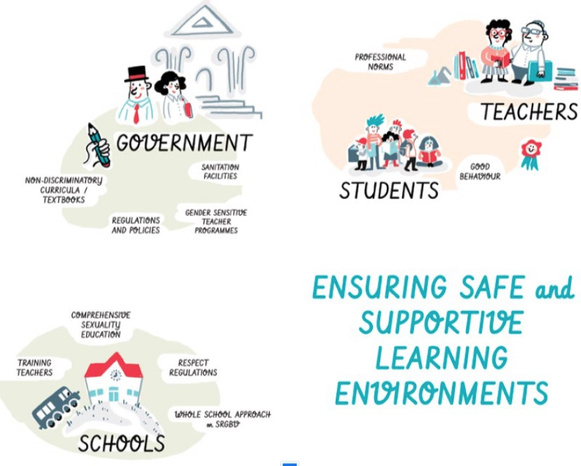
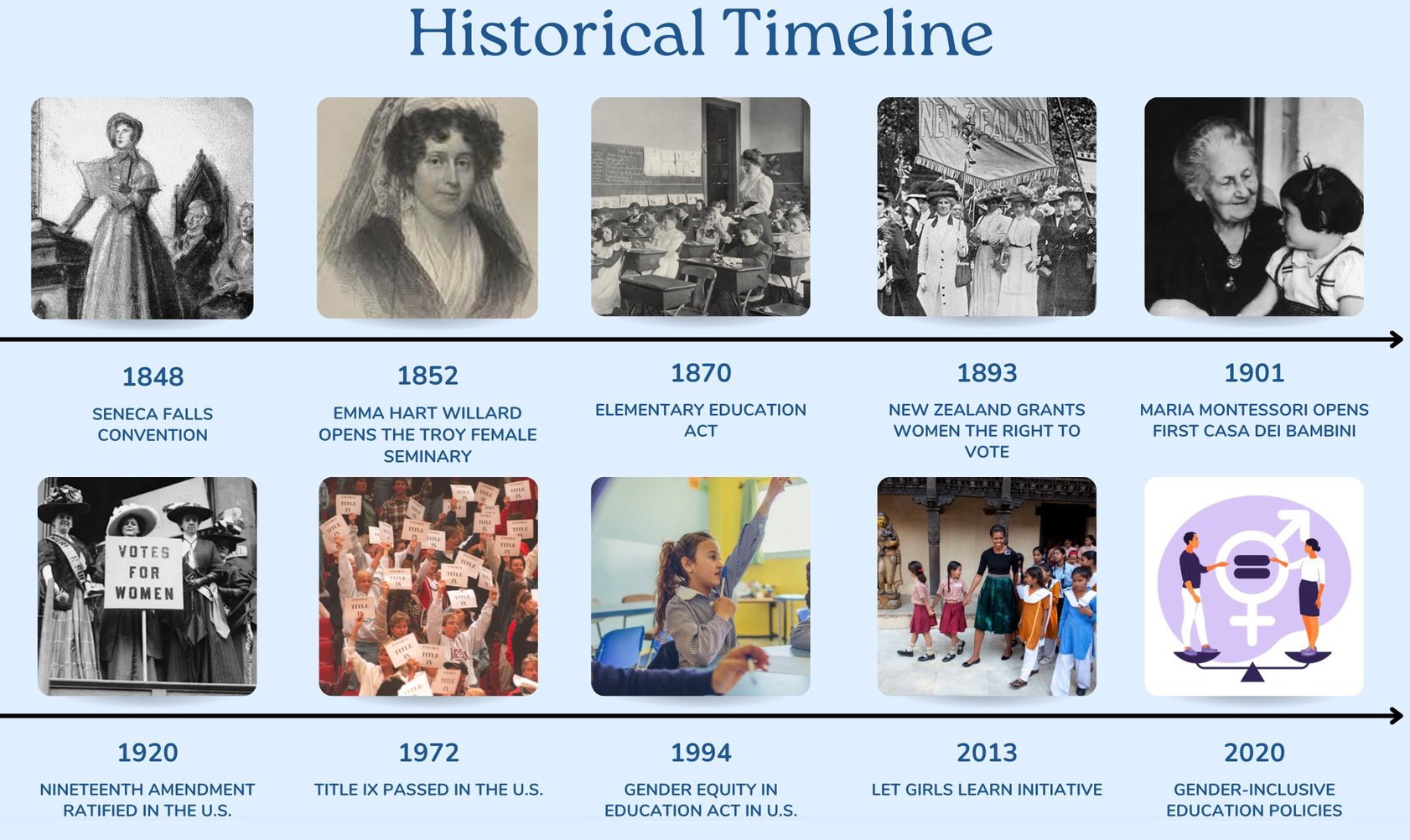

Gender Equity
in K-12
Education
BLOG #2
acknowledging the decolonialized and globalized approaches to sex and gender
Although there have been significant improvements in the past few decades, there is still a long way to go before achieving true gender equity. Women identifying people continue to strive to make progress in education and eployment.These careers and education lacking gender equity begin at the root of education in many women lives from grades K-12. Throughout these fundamental years there are many gender sterotypes and bias within the classroom from peers as well as educators.
Stereotypes surrounding subject choices have a profound influence on students' educational paths. Traditionally, there has been a perception that certain STEM subjects are more suitable for boys, while humanities and arts are deemed more appropriate for girls. These stereotypes impose limitations on students' choices and perpetuate gender imbalances in specific fields.
Moreover, teacher expectations play a crucial role, as educators may unintentionally hold different standards and assumptions based on students' gender. This can manifest in the belief that boys excel in math or that girls are better suited for certain career paths. These biases can significantly impact students' self-perception, confidence, and academic performance. Additionally, gender biases affect classroom dynamics, with boys often being encouraged to participate actively and assertively, while girls may face social pressure to adopt more passive and cooperative roles. This unequal distribution of participation opportunities hampers girls' engagement and voices within the learning environment.
Furthermore, gender biases can hinder girls' access to leadership positions, such as class president or team captains, creating additional barriers or implicit biases that limit their leadership potential. Sports and physical education also fall victim to gender stereotypes. Girls may face expectations to participate in specific sports, while boys are encouraged to engage in traditionally masculine activities. These biases restrict opportunities for students to explore a wide range of physical activities, reinforcing gender-based divisions and perpetuating inequalities.
All in all, on of gender biases within the educational system. Addressing and challenging these biases is crucial to fostering an inclusive and equitable learning environment that allows students of all genders to thrive and pursue their passions without constraints.

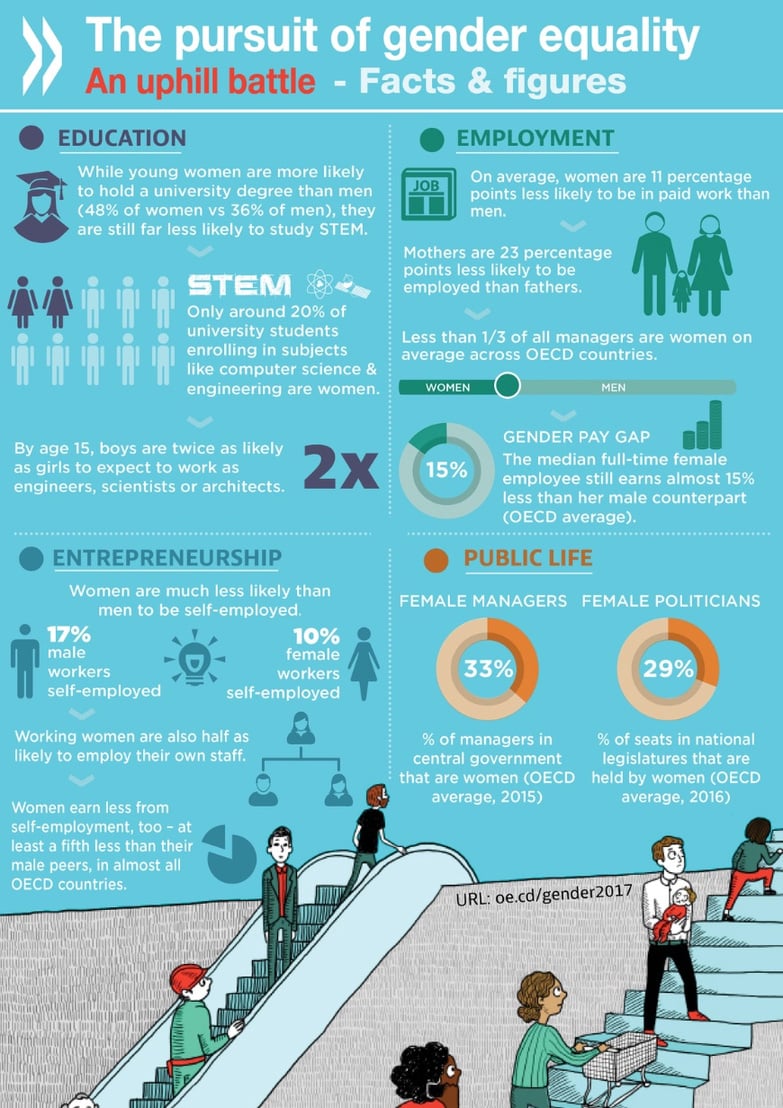
Gender Equity in K-12 Education
BLOG #3
Integrating Decolonial and Globalized Perspectives in Public K-12 Education

Equity can be achieved through the practice of promoting educational systems that will cater to students regardless of their background, language, race, economic profile, gender, learning capability, disability or family history. For example: Title VI of the Civil Rights Act prohibits discrimination based on race, color, or nationality in all programs or activities that receive federal funding, including education. This includes providing equal access to programs, activities, and services. Title VII of the Civil Rights Act: This law prohibits discrimination in the workplace, including in educational institutions. It prohibits employers from discriminating against employees or job applicants based on race, sex, religion, and national origin. These legal frameworks are essential in protecting students from discrimination in education, and ensuring that all students have access to equal opportunities and resources. Schools and other institutions must comply with these laws to prevent discrimination, and failure to comply can result in legal actions.
In order to have equity and an inviting experience in our public education, requires a significant shift in the way we teach and understand education. For example: There is a need to develop a decolonial curriculum that includes diversity. Public education should be developed in a way that recognizes, acknowledges, and incorporates diverse histories, traditions, and narratives from a variety of cultures and contexts. Curriculum should be designed to highlight the contributions of different cultures and to challenge harmful stereotypes and misconceptions.
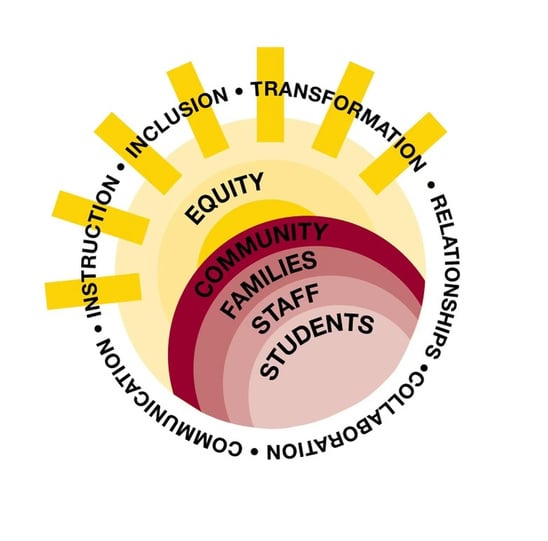
Learning about relevance of global issues: Students must be made aware of the impact of global issues on their daily lives. Teachers should link their lessons with real-world events from different countries and communities. This fosters an understanding of the relations between local and global communities. These steps will help us to create a more inclusive and inviting experience for all students, regardless of sex or gender.
Students need to participate in inclusive classroom environments. Teachers must
work to create inclusive classroom environments in which all students feel valued and supported. This can be achieved by actively discouraging discrimination, being receptive to diversity within the classroom, and using inclusive language in lessons and learning materials.
Overall, the implementation of decolonial and globalized perspectives in education requires an overhaul that addresses not just curriculum design but also instructional practices. These steps are crucial in ensuring that education becomes inclusive and diverse that promotes critical thinking and prepares students for a more equity and inclusive life.
BLOG #4
Gender Equity in K-12 Education
What could the future look like?
There are many success stories when it comes to implementing gender equity in public education. One of the greatest inspirations in this field includes Malala Yousafzai, an extraordinary individual who faced immense adversity and even survived a near-fatal attack for her activism. Despite these challenges, she has remained steadfast in her mission to advocate for the right to education for all children, especially girls. Malala’s unwavering courage and determination have become a source of inspiration for countless people around the world, shining a bright light on the significance of gender equity in education on a global scale.
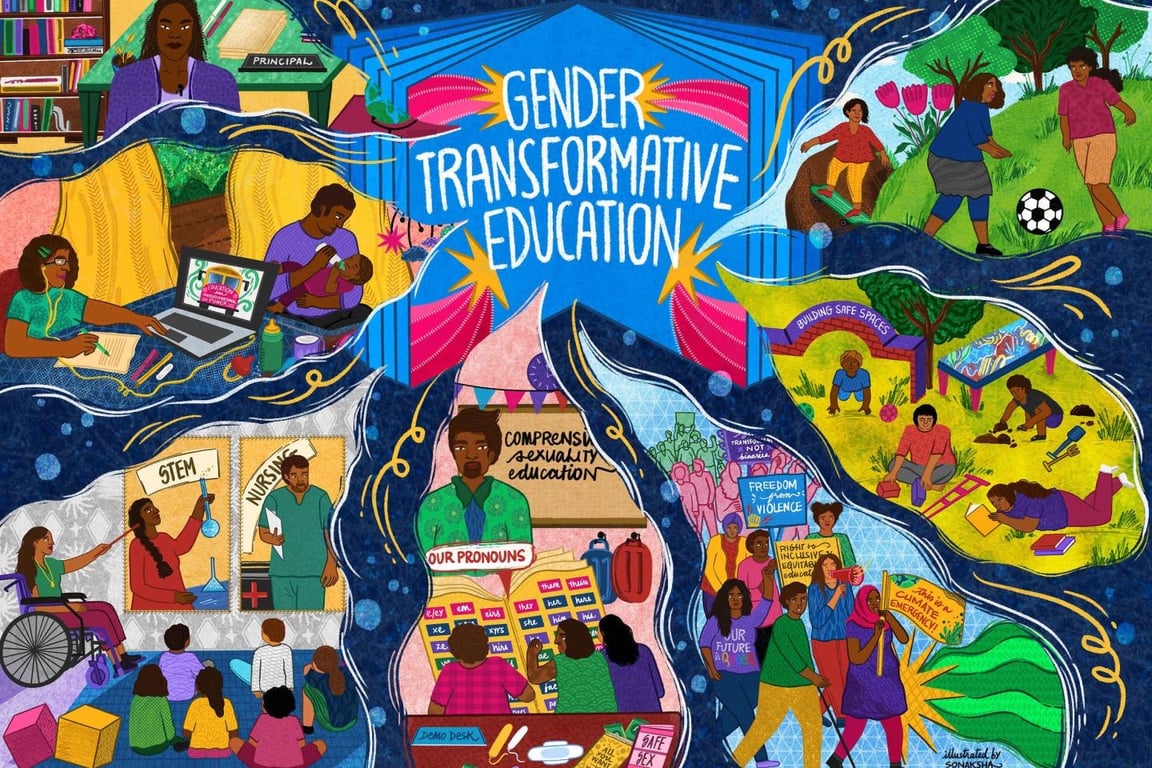
As we implement the framework of gender equity in public education, our hopes for the future are centered around creating inclusive and safe learning environments where all students feel valued and respected. Our tool aspires to provide insight towards equal opportunities for students of all genders, ensuring they have access to quality education and the freedom to pursue their interests. Challenging harmful stereotypes and biases is another important goal, as we aim to break down societal expectations and encourage students to explore a broad range of possibilities without limitations based on gender. Ultimately, our hope is for every individual to thrive and reach their full potential, regardless of their gender, within an educational system that promotes equality and empowers all students.
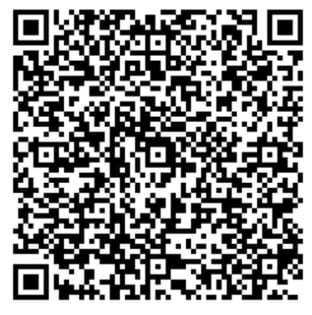
Scan the QR code on the left for a Gender Equity in K-12 Education slide show to share!
Scan the right QR code for a comment section/feedback form